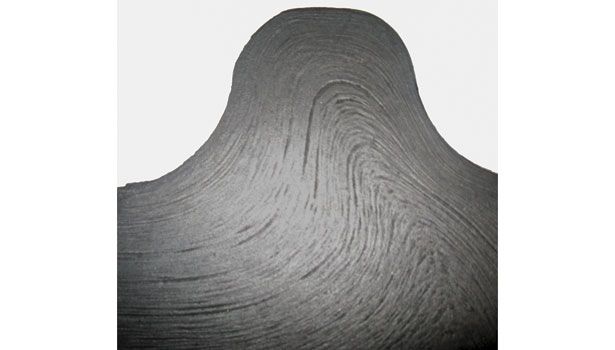In order to participate in the GunBroker Member forums, you must be logged in with your GunBroker.com account. Click the sign-in button at the top right of the forums page to get connected.
"forging marks" revisited
 metalsmitty45
Member Posts: 83 ✭✭
metalsmitty45
Member Posts: 83 ✭✭
A while back I showed a couple vintage 1894/1892 receivers to a friend that works for a well known forging company .They have distinct flowing marks that people refer to as forging marks.
He replied those are the flowing grain lines of a coarse grained steel that over time oxidation and deterioration has revieled them.
Examing a broken bolt recently showed very coarse internal structure.
Here is a couple cross sections of forged parts acid etched to show grain.Any thoughts from the experts?


He replied those are the flowing grain lines of a coarse grained steel that over time oxidation and deterioration has revieled them.
Examing a broken bolt recently showed very coarse internal structure.
Here is a couple cross sections of forged parts acid etched to show grain.Any thoughts from the experts?




Comments
To the steel .Coarse grain steel is usually easier to machine in mass production.Forging during that era should have been good.When new and freshly polished and blued theses lines are not seen.I have a restoration 1892 that after carbona bluing the lines show up as darker streaks .There is a early 1894 rifle on GunBroker now that was factory refinished and shows the darker streaks.
Some collectors have said these lines were folds of metal which I do not believe.
Forging receivers would not have required layering of the steel , just simply a grain orientated rough shape for added strength,same as today's techniques other than today closed dies are used .